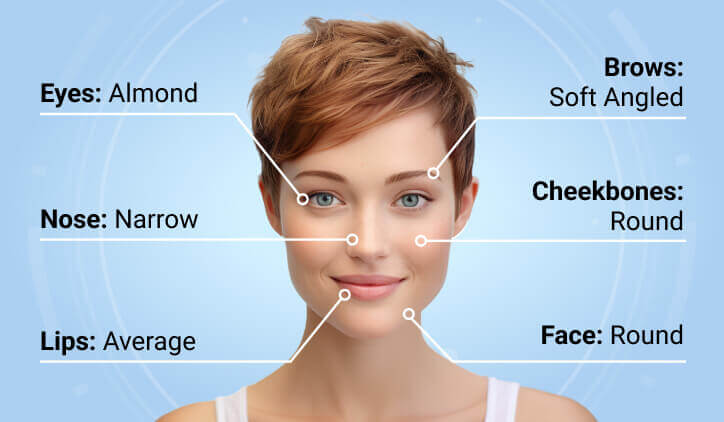The Evolution of Facial Attribute Analysis Using Neural Networks

The Evolution of Facial Attribute Analysis Using Neural Networks
How deep learning transformed face analysis from simple geometric measurements to sophisticated attribute understanding
Facial attribute analysis has undergone a remarkable transformation over the past several decades, evolving from basic geometric measurements to sophisticated neural networks capable of identifying everything from age and gender to emotional states and even genetic information. This journey mirrors the broader development of computer vision and artificial intelligence, showcasing how neural networks have revolutionized our ability to extract meaningful information from human faces.
The Early Days: Geometric Feature Analysis
In the earliest stages of facial analysis research during the 1960s through 1980s, approaches were necessarily simple and limited by computational power. Early systems relied primarily on manual measurements of facial geometry—calculating distances between key facial features like eyes, nose, and mouth, and the angles between them .
These geometric methods generated unique facial "fingerprints" based on the relative positioning of facial landmarks, but they struggled with variations in image quality, lighting conditions, and facial expressions . The recognition accuracy was relatively low, and the process often required significant manual intervention.
The 1970s saw important foundational work by American psychologists Ekman and Friesen, who defined the six basic human emotions—happiness, anger, surprise, fear, disgust, and sadness—and established the Facial Action Coding System (FACS) . This system allowed researchers to describe facial movements through a series of Action Units (AUs), enabling the detection of subtle facial expressions, though automated analysis remained out of reach.
The Shift Toward Statistical Approaches
The 1990s marked a significant turning point as computational power increased and new algorithms emerged. During this period, often called the "boom phase" of facial recognition research, statistical approaches began to dominate the field .
Two particularly influential methods emerged:
- Eigenfaces: This approach used Principal Component Analysis (PCA) to encode and recognize facial images
- Fisherfaces: Utilizing Linear Discriminant Analysis (LDA), this method became a milestone in face recognition algorithms
These techniques represented faces as points in a dimensional space, allowing for more robust comparison than simple geometric measurements. Meanwhile, appearance-based methods like Active Shape Models (ASM) and Active Appearance Models (AAM) contributed significantly to facial feature point modeling .
While these methods improved recognition capabilities, they remained limited in their ability to analyze specific facial attributes beyond identity. They were particularly sensitive to variations in lighting, pose, and expression .
The Rise of Deep Learning
The breakthrough that truly revolutionized facial attribute analysis came with the advent of deep learning, particularly Convolutional Neural Networks (CNNs). The turning point arrived in 2012 when a team from the University of Toronto submitted "AlexNet"—a deep convolutional neural network algorithm that leveraged GPUs—to the ImageNet competition, achieving a dramatically lower error rate in image recognition tasks .
This event catalyzed the computer vision community, demonstrating the unprecedented power of deep neural networks for image understanding tasks. Soon, researchers began applying these techniques specifically to facial analysis.
Several key developments accelerated progress in facial attribute analysis:
- Large-scale datasets: Projects like ImageNet provided millions of labeled images for training
- Specialized architectures: Networks specifically designed for facial analysis emerged
- GPU acceleration: Dramatically reduced training times for complex models
By 2014, Facebook's DeepFace project achieved over 97% accuracy on facial verification tasks on the Labeled Faces in the Wild (LFW) dataset—approaching human-level performance . This represented a staggering improvement from the 60% accuracy achieved by the Eigenface method on the same dataset .
Modern Facial Attribute Analysis Systems
Contemporary facial attribute analysis systems typically employ sophisticated pipelines that build upon the deep learning revolution. Most modern systems consist of three key components :
- Face detection: Locating faces within images
- Face alignment: Normalizing for pose and size variations
- Feature extraction and analysis: Using neural networks to identify attributes
Today's systems can identify a wide range of facial attributes, expanding far beyond basic identity recognition:
Demographic and Physical Attributes
Modern neural networks can accurately predict age, gender, and ethnicity from facial images. These capabilities have practical applications in marketing, retail analytics, and access control systems.
Emotional and Behavioral Analysis
Building on Ekman's foundational work on facial expressions, modern AI systems can detect subtle emotional states by analyzing facial muscle movements . The Facial Action Coding System has been operationalized through deep learning, allowing for automated detection of even micro-expressions that may be difficult for humans to perceive.
Genetic and Anthropological Insights
Recent research has demonstrated surprising connections between facial attributes and genetic information. In 2024, researchers from Shanghai Jiao Tong University used cross-population meta-analysis results to simulate the facial morphology of ancient humans, predicting that Neanderthals and Denisovans likely had similar facial features including wider but shorter noses and wider intercanthal distances .
Historical and Artistic Analysis
Facial analysis technologies have even found applications in art history and anthropology. In 2015, researchers at the University of California, Riverside began using facial recognition technology to identify unknown subjects in historical portrait paintings . More recently, in 2020, researchers published a study in Nature Communications using machine learning to analyze facial cues in historical paintings, tracking changes in trustworthiness expressions over centuries .
Technical Advances in Neural Network Architectures
The impressive capabilities of modern facial attribute analysis stem from several key technical innovations in neural network design:
Convolutional Neural Networks (CNNs)
CNNs revolutionized facial analysis by automatically learning hierarchical features from raw pixel data. Early layers learn basic features like edges and corners, while deeper layers assemble these into more complex patterns and facial components . This hierarchical approach proved far more effective than handcrafted features for capturing the complex variations in human faces.
Multi-task Learning
Modern systems often employ multi-task architectures that learn to recognize multiple attributes simultaneously. For instance, DeepID2+ demonstrated that adding supervision signals to every layer of the network and using larger network structures significantly improved performance . By sharing representations across related tasks, these systems learn more robust features.
Robust Representation Learning
Advanced training techniques have enabled neural networks to learn representations that are invariant to nuisance variables like lighting and pose, while remaining sensitive to meaningful attribute differences. The DeepID2 system exemplified this approach by learning nonlinear feature transformations that minimized within-class variations while maintaining separation between identities .
Applications and Implications
The applications of neural network-based facial attribute analysis span numerous domains:
Security and Access Control
From airport border control using facial verification for rapid通关 to corporate security systems replacing traditional employee badges, facial attribute analysis has become integral to modern security infrastructure.
Healthcare and Research
Medical researchers use facial analysis to identify genetic syndromes with distinctive facial features, while neuroscientists employ these tools to study emotional processing and behavioral disorders.
Business and Marketing
Retailers analyze customer demographics and responses to products, while financial institutions use facial verification for customer authentication .
Social Science and Anthropology
Researchers apply these technologies to study cultural trends, historical patterns, and human behavior across different populations and time periods .
Ethical Considerations and Challenges
Despite significant progress, facial attribute analysis continues to face important challenges:
Privacy Concerns
The ability to automatically extract detailed personal information from faces raises significant privacy issues . Regulations in many regions are struggling to keep pace with technological capabilities.
Bias and Fairness
Research has revealed that some facial analysis systems exhibit performance disparities across demographic groups, prompting efforts to develop more equitable algorithms.
Technical Limitations
Factors like varying illumination, occlusions, pose variations, and unusual facial expressions continue to challenge systems , though ongoing research is steadily addressing these limitations.
Future Directions
The future of facial attribute analysis using neural networks points toward several promising directions:
- Multimodal integration: Combining facial analysis with other modalities like voice and gait
- Causal reasoning: Moving beyond correlation to understand causal relationships
- Explainable AI: Developing more interpretable systems that can explain their attributions
- Few-shot learning: Recognizing attributes with limited training examples
- Privacy-preserving analysis: Developing techniques that extract useful information without compromising privacy
As research continues, we can expect facial attribute analysis to become even more sophisticated, accurate, and integrated into various aspects of daily life and scientific inquiry.
Conclusion
The journey of facial attribute analysis from simple geometric measurements to sophisticated neural networks represents one of the most successful applications of computer vision and deep learning. Through continued research and development, these technologies have evolved from academic curiosities to powerful tools with widespread applications.
However, as capabilities expand, so does the responsibility to develop and deploy these technologies ethically. The future of facial attribute analysis will likely involve not only technical advancements but also ongoing dialogue about the appropriate boundaries and safeguards for these powerful capabilities.
What remains clear is that neural networks have fundamentally transformed our ability to understand and interpret the rich information contained in human faces, opening up new possibilities across science, industry, and daily life.
Take the First Step Towards Face Swap and Recognition Intelligent

